How does the Large Hadron Collider work? Why was it built? And why is it has it been upgraded again?
The inquiry into the laws that underpin the existence of our Universe are the most difficult task over which our great philosophers and scientists have fought for millennia. Humanity has always been interested in the questions: what does the earth and the universe consist of? How is matter arranged at the smallest level and does matter have a divisibility limit at all?
Democritus believed that matter consists of the smallest indivisible particles - atoms, the shape of which determines the properties of matter. As a matter of fact, the word “atom” is also translated from the ancient Greek as “indivisible”. We still use this term, although we have long known that atoms consist of a nucleus and electrons revolving around it. Moreover, the nucleus consists of protons and neutrons, that in turn break up into quarks. At this level, the familiar Newtonian physics is no longer working, and particles interact according to the laws of quantum mechanics.
How can we study objects whose sizes are so miniscule that not even the most powerful magnification will help us to consider them? After all, any microscope itself consists of atoms.
In order to understand how the elementary particles are arranged, what they consist of and what effects they are exposed to, scientists accelerate them to incredible speeds, and then crash them together. As a result of a collision the splitting of particles occurs for an extremely brief moment. With the help of special detectors, it is possible to fix individual components into which the original particles decay. Thus, scientists are studying the properties of already known elementary particles, as well as discovering new ones.
The famous Higgs boson, whose existence was theoretically substantiated as early as 1964 after years of experiments, was discovered with the help of the Large Hadron Collider (BAC) in 2012.
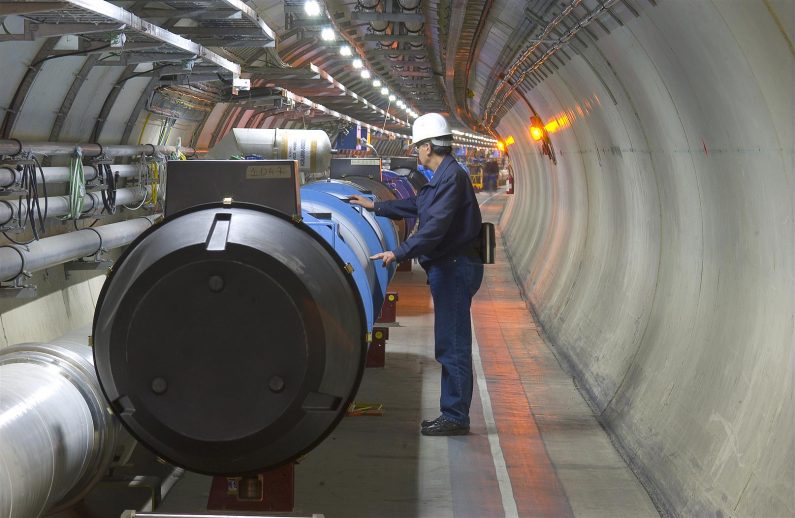
LHC is the largest international science project that helps physicists experimentally test theoretical models of the structure of matter and the Universe. The construction of the LHC began in 2001. In 2008, the collider was tested and put into operation. In 2010–2012, the first full session of the LHC was conducted. Subsequently, the accelerator was upgraded for two years. In the updated configuration, he worked until the end of 2018. Currently at CERN (European Organization for Nuclear Research) work is underway on the next upgrade, thanks to which physicists are planning to significantly increase the efficiency of the facility.
What is the Large Hadron Collider?
A collider is an accelerator in which two beams of particles (extremely small pieces of matter) are made to collide, hitting each other at high speed so scientists can study what is produced. In the LHC, protons, neutrons and other heavy nuclei subject to strong nuclear interaction are accelerated. This class of particles are called hadrons - hence the name of the accelerator.
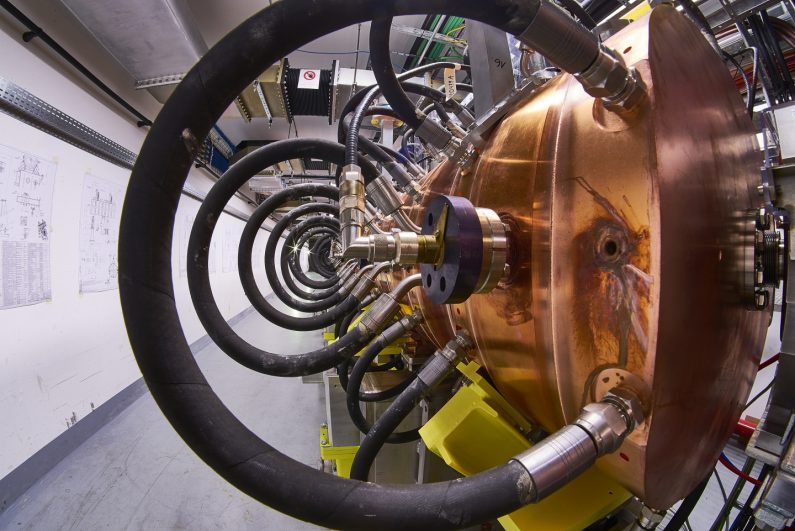
Today, the LHC is the most powerful particle accelerator. It was built at CERN on the site of the previous accelerator complex – ‘The Large Electron-Positron Collider’ the largest electron-positron accelerator ever built. More than 10,000 people around the world participate in the work of the LHC, as well as in its maintenance: there are engineers and scientists working directly at CERN, as well as a huge number of researchers from more than 100 countries.
The main part of the facility is located in both Switzerland and France consisting of a circular tunnel, the circumference of which reaches almost 27 km, or 16.77 miles. There are two vacuum tubes inside the tunnel laid at a depth of approximately 100 meters. During experiments, accelerated particle beams rotate in opposite directions. Particles should not touch the walls of pipes which have a diameter is only a few centimeters. To achieve this their trajectory is controlled by powerful focusing magnets.
To accelerate the particles, an accelerator section is used, the magnets of which each turn of the proton beam give it extra energy. A special beam dumping system, if necessary, quickly removes particles from the main channel of the accelerator to the side channel.
Accelerated beams rotate in the accelerator tubes at a speed of more than 10 thousand revolutions per second. The energy of the collision causes the splitting of particles into smaller components. To carry out experiments, it is necessary not only to accelerate and collide particles, but also to fix the results of the collision. This task is performed by special detectors of elementary particles located at the intersection of vacuum tubes. Time and time in an infinitesimal moment of time the process repeats. An accelerator means not only the installation itself for acceleration and stabilization of the beam path, but also for the detectors.
Hadron Collider Scheme
The primary acceleration of the beams transpires in a relatively small SPS ring. After that the particles enter the main channel of the accelerator.
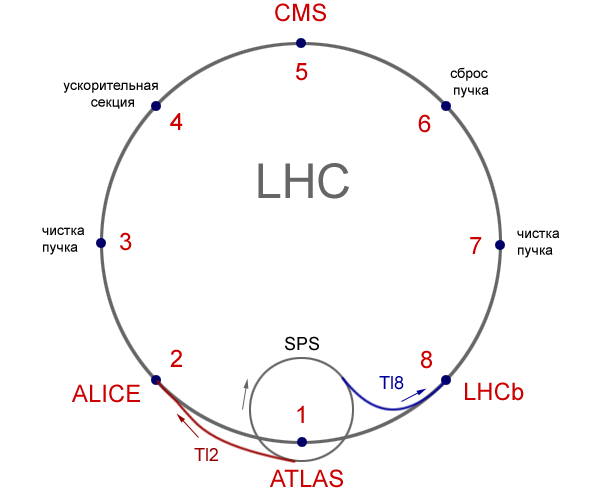
The main ring is divided into eight sectors. Vacuum tubes intersect at points 1, 2, 5, 8 (see figure above). Detectors are located at these points, recording the results of particle collisions. There are four main detectors: the large ATLAS and CMS and two medium ones: ALICE and LHCb. Also, at the LHC, two more small specialised detectors near ATLAS and CMS are installed: these called are TOTEM ( (TOTal cross section, Elastic scattering and diffraction dissociation Measurement at the LHC) and LHCf (Large Hadron Collider Forward) (The Large Hadron Collider forward.
Why do I need Hadron Collider?
The LHC is capable of surprising anybody with the sheer magnitude and scale of the project, however, a person far from science and technology may not understand why this whole huge installation, worth billions of dollars, is needed if it does not bring immediate practical results.
Is one experiment so important?
Given that the collider combines the efforts and experience of many people, the test results are used by various scientific groups around the world. Consequently, the same data can help researchers in research work in different directions of modern physics.
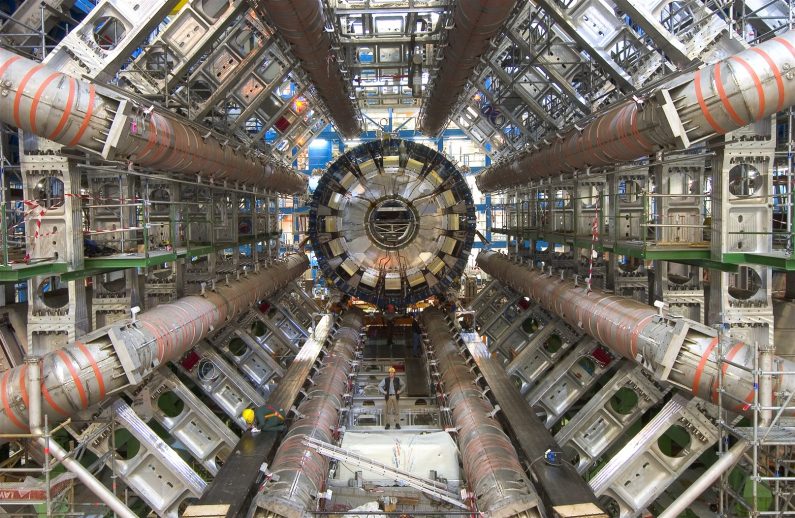
Furthermore, the LHC is a complex that includes an accelerator, detectors, ancillary facilities. Strictly speaking, a separate experiment occurs on each detector, each of which is designed for its own tasks, and they all collect different data. Therefore, not only one experiment takes place at the accelerator, but several simultaneously, and the obtained data is used by thousands of scientists around the world.
The benefits of basic research
Basic research usually does not imply short-term gains and ready-made application solutions. New developments on the basis of scientific discoveries may appear after years, and the role-out of a huge amount of scientific results is not at all of practical use. Generally speaking, the primary task of science is to build a solid, proven model. If experiments refute the theory that prevailed before, scientists have to find a new rationale explaining scientific facts and build a new theory.
Experiments at the LHC test the validity of the theory called the Standard Model, which describes the electromagnetic, weak and strong interaction of all elementary particles, but does not explain the existence of gravity, dark matter and dark energy. The logic of experiments at the collider is as follows: observing the effects of collisions of proton beams, scientists try to fix any, even the most insignificant deviations from the Standard Model. These results should help build the so-called New Physics, in which there will be a generalised theory explaining all kinds of fundamental interactions. In simple terms, if we manage to construct such a theory of everything, then, having sufficient computational resources, we can accurately calculate and predict any physical process.
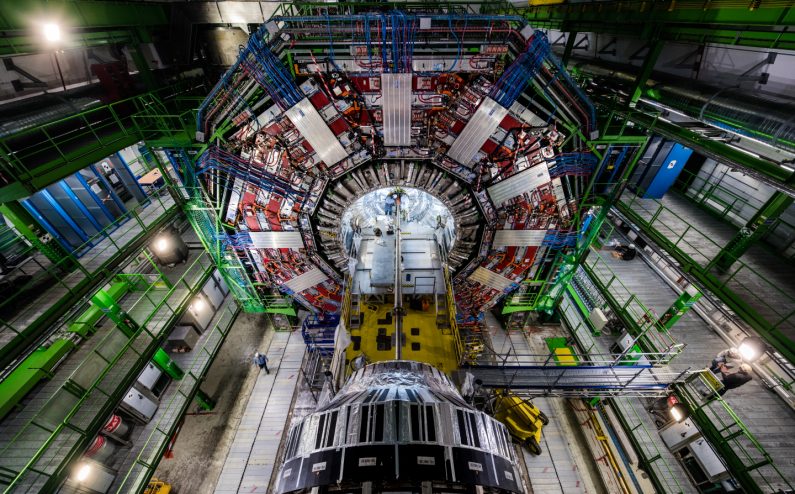
Over the years, the LHC scientists have discovered the Higgs boson and other particles, described in detail some of the processes that occur during the decay of particles, and accomplish a number of other significant results. All these scientific discoveries contribute to the general knowledge of physicists about the universe. Some of this knowledge will help create new technologies that use the laws of nature for the benefit of mankind.
By the way, most scientists are engaged in science because they love their work and love solving complex problems, rather than some deep altruistic desire to create something useful, practical and for the benefit of society. Their motivation is personal achievement and science for science sake.
Why study elementary particles?
Whilst attempting to penetrate to smaller and smaller levels of the organisation of matter, researchers constantly stumble upon new and new obstacles. By the beginning of the 20th century, the idea had arisen that atoms consist of positively and negatively charged particles. Subsequently, it became clear that a dense nucleus occupies a very small volume of an atom somewhere in the centre, and electrons are somehow distributed around the nucleus. Gradually scientists came to formulate the contemporary quantum-mechanical model of the atom. Each new step required new experiments.
The next stage in the development of physics is a full-fledged study of the laws according to which elementary particles like quarks and neutrinos exist.
Incidentally, today there are also applied results of these studies. For example, the study of elementary particles helps to develop such ways of dealing with cancer, such as hadron therapy of cancer tumors, positron emission tomography, and other technologies.
LHC is a microscope for elementary particles.
The layperson may wonder if physicists study such small objects: why do they need such a huge setup for experiments?
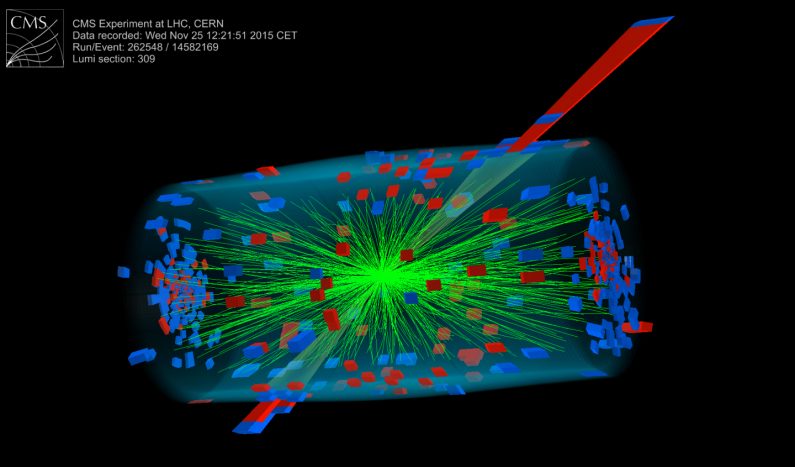
The fact is that in order to fix elementary particles, it is imperative to increase their energy so that they are “more noticeable” to the detectors. In order to achieve this, a huge BAC complex is needed. Additionally, we must remember that this complex also includes an enormous amount of equipment, stabilizing the trajectory of particles, as well as other auxiliary installations.
The energy of the particles at the LHC is similar to the resolution of microscopes, which is limited by the length of the light wave.
Are such expensive experiments justified?
The price of experiments on the LHC may also seem huge. Is it reasonable to spend such money (billions of dollars) on basic science if it is possible to make something useful and necessary for ordinary life on them? After all, the countries participating in the project are investing taxpayer money in research.
The truth is that such spending, of course, justified. The fact is that if this money did not go to the collider, they would be sent to other scientific studies, because each country allocates funds from that part of the budget, which is intended for science. However, the LHC is certainly the most effective system that allows you to get unique data. For this reason it is better to work together internationally to invest in a large international project and then use the results of experiments than to create ten less expensive, but less efficient projects.
Will the collider destroy the universe?
Around the LHC there are a huge number of myths, among which there is the claim that the accelerator is capable of destroying our planet or even the entire Universe.
The rationale for this myth is based on the theory that the Universe in which we live is unstable, and collisions at the collider can generate a more stable version of the Universe, which will begin to grow and destroy our version.
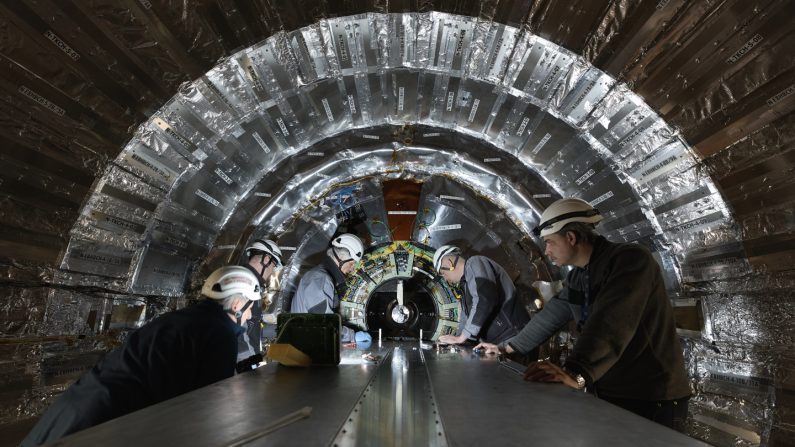
To refute such suppositions is fairly easy. Notably, natural processes constantly occur in the Universe, which accelerate and push together innumerable particles with energies that are simply unattainable at LHC. Moreover, if there was even the slightest chance that such a collision would lead to a “universal catastrophe,” it would have happened long ago.
Reboot
At the end of 2018, all experiments at the LHC were stopped, and the team of engineers began a large-scale upgrade of the system. The purpose of the improvements is to create a Large Hadron Collider of high luminosity. Simply put, acceleration, collision and particle detection systems will be improved for more efficient accelerator launches. The hadron beam in the new version of the collider will be much denser, which means that the probability of collision of individual particles will increase. After the collisions, more “debris” of elementary particles will be obtained, the detectors will register even more events, and the probability of finding new particles will increase significantly.
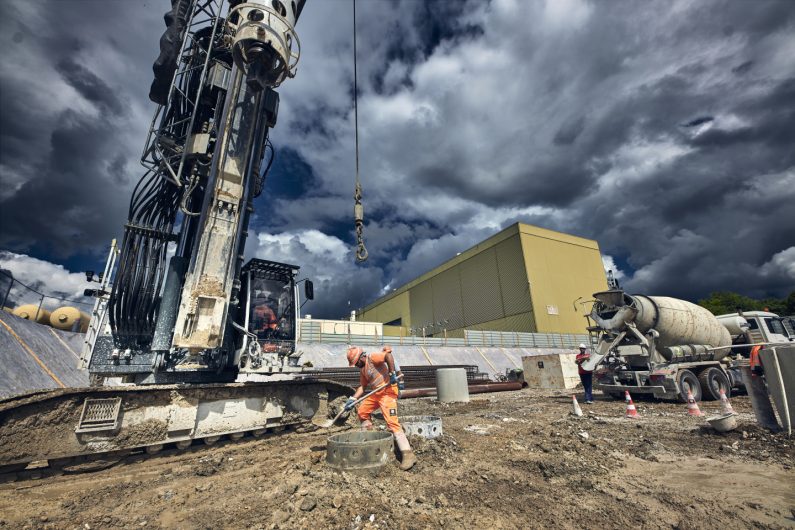
The high luminosity collider will work from the beginning of 2021 to the end of 2023. Then the next stage of modernization will follow to increase the luminosity by a factor of 5–7. The next operation session will be started in 2026.
So far, a precisely calculated the plan of operation and improvement of the accelerator until 2034. Nevertheless, now CERN is working on the development of the FCC project (Future Circular Collider), that is, the collider of the future, which will be located in the same tunnel.
Share this with your friends!
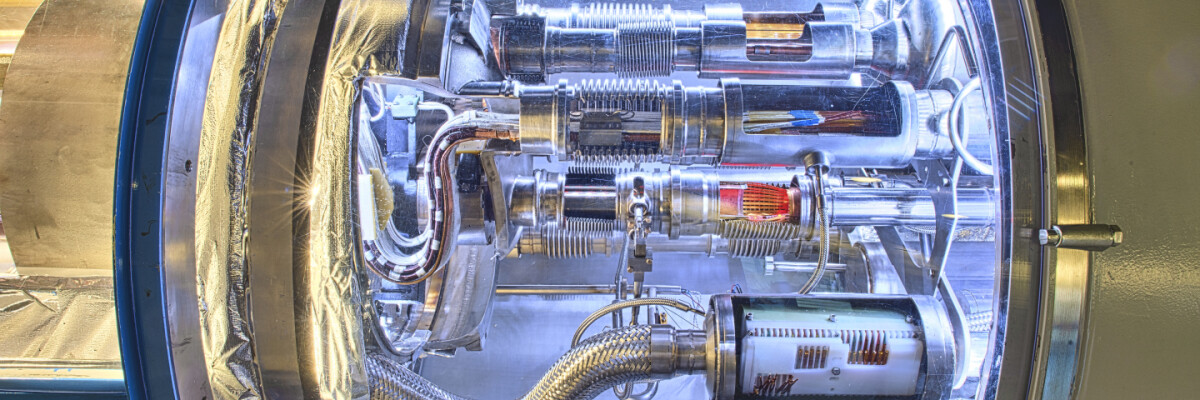





Be the first to comment
Please log in to comment